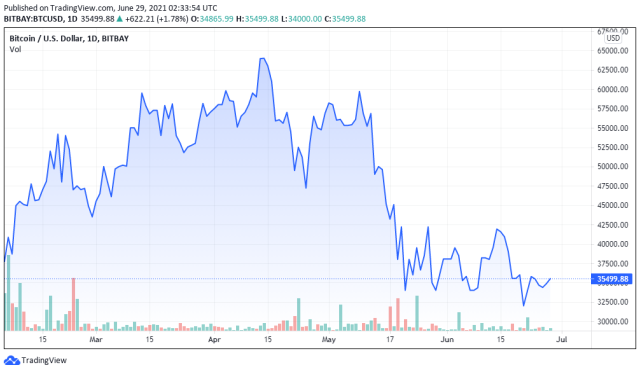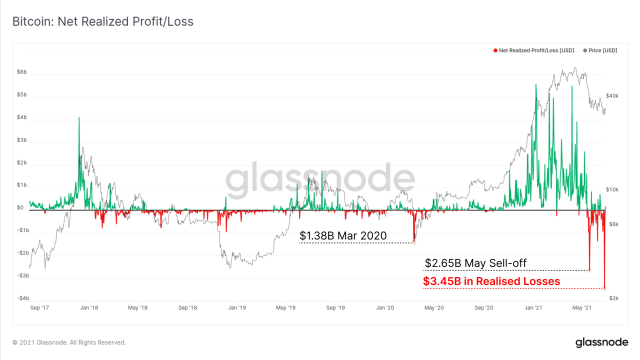
Sadly for them, paper hands people are breaking all kinds of records. Nobody expected a Bitcoin winter this early, and recent investors who lack conviction have been selling at a loss for a while now. Glassnode informs, “After breaking new records on absolute dollar denominated losses in May, the market capitulated yet again this week, realising a new ATH of $3.45B in losses.” Yikes! Who was expecting this size of a capitulation in the middle of the cycle?
Related Reading | Altcoins See Capitulation Against Bitcoin; Analysts Expect More Blood
According to Coinmarketcap’s news:
Amid massive FUD, traders have been liquidating their supplies very fast. The Bitcoin network realized profit and loss has hit an all-time low as per on-chain data provider Santiment.
And later on:
Considering that a low of new investors has joined the Bitcoin network over the last few months, the price volatility is something they are experiencing for the first time.
New investors are surely losing their minds, but, is that all that is happening?
Bitcoin Realized Losses hit an all-time low | Source: Glassnode
Tax-Loss Harvesting On Steroids
Since these new investors are actually selling at a loss, they can legally subtract those losses from the capital gains amount they owe taxes on. This opens the door for tax-loss harvesting, a common practice that Investopedia explains as:
As a strategy, tax-loss harvesting involves selling an investment that has lost value, replacing it with a reasonably similar investment, and then using the investment sold at a loss to offset any realized gains.
However, since in cryptocurrencies “so-called wash sale rules don’t apply, according to financial advisors,” you don’t need to find a “reasonably similar investment.” You can just re-buy the same cryptocurrency, as CNBC explains:
This offers two benefits to crypto investors: They can sell crypto for a loss, and then use that loss to reduce or eliminate capital gains tax on winning investments. Then, they can quickly buy back the crypto they sold so as not to miss out on a subsequent rebound in price.
Could this loophole have something to do with the phenomenon this article studies?

BTC price chart on Bitbay | Source: BTC/USD on TradingView.com
Are Institutions Benefiting From Capitulation?
This other explanation won’t surprise anyone. Maybe institutional investment is buying while panicking paper hand people are selling. Our sister site NewsBTC already quoted this tweet from Mark Yusko, Morgan Creek Capital Management’s CEO:
Not a secret that when large investors want to acquire a big position in an asset they first paint the tape with negative statements and small short positions to drive price down and free up supply of the asset so they can buy at lower price… #OldestTrickInTheBook https://t.co/qttx8kGglU
— Mark W. Yusko #TwoPointOneQuadrillion (@MarkYusko) May 14, 2021
Then, NewsBTC concluded:
Bitcoin will bounce back with institutional money snatching every coin from scared retail investor’s hands. In fact, the process is probably already happening.
However, Glassnode’s analysis reflects another thing altogether. To prove their case for the recent lack of institutional interest, they cite the low numbers of Grayscale’s GBTC trust fund and the Canadian ETFs. That, plus:
… on the institutional front, we can observe the net change in the coin balance held on Coinbase, a preferred venue for US institutions during the bull market. After a sustained period of net outflows since Dec 2020, the change in Coinbase balance has flattened out markedly.
Related Reading | Bitcoin Has Been in a Bull Run Since 2019—and There’s More to Come: Analyst
Capitulations are notoriously hard to identify while you’re in the middle of them. After the fact, on the other hand, they’re extremely easy to spot. Shall we wait and see? Or are we sure that capitulation happened and the bottom is in?
Featured Image by Brett Jordan on Unsplash - Charts by Glassnote and TradingView



















